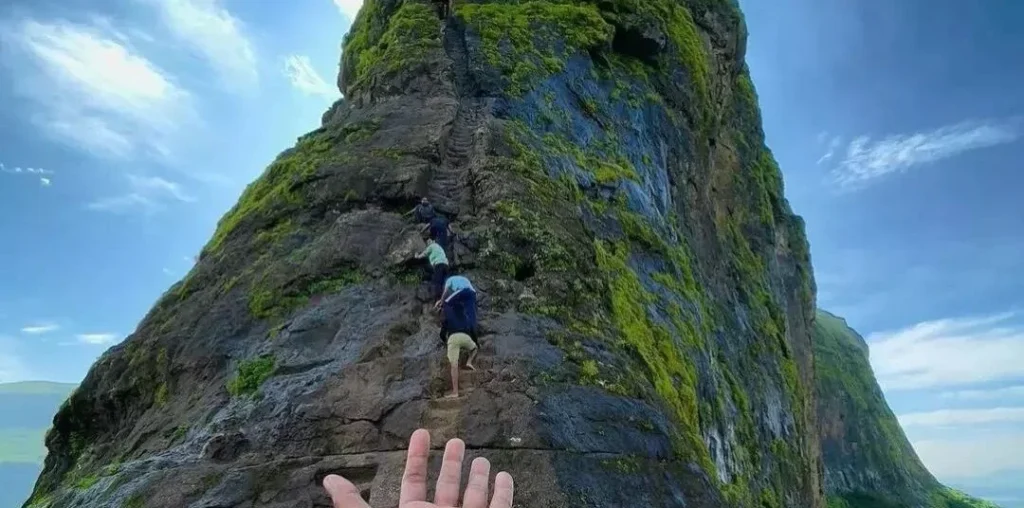Harihar Fort is an iconic destination for trekking enthusiasts and history lovers alike. Standing tall at an impressive height of 1,121 meters (3,678 feet), the Harihar Fort trek offers an exhilarating adventure that combines natural beauty, historical significance, and a challenge for thrill-seekers. However, despite its beauty, the fort has earned notoriety for its steep, rocky paths, and tragic incidents that have occurred over the years, leading to the dark association of the Harihar Fort death.
This article will provide an in-depth look at the Harihar Fort trek, its historical importance, the challenges faced during the trek, and the precautions one should take to ensure a safe and memorable journey.
The Historical Significance of Harihar Fort
The Harihar Fort is an ancient hill fort located near the town of Igatpuri in the Nashik district of Maharashtra. It was originally built by the Nizam Shahi dynasty and later came under the control of the Marathas. The fort is historically significant due to its strategic position, offering a panoramic view of the surrounding region, and served as an important military stronghold during the medieval period.
The fort is famous for its unique vertical rock-cut steps, which lead to the top. The journey to the fort top is an arduous yet fascinating trek that takes trekkers through steep, challenging terrain. The fort itself contains remnants of old structures, including ancient temples and bastions, which offer insight into its glorious past.
Today, Harihar Fort attracts trekkers, nature lovers, and history enthusiasts alike, making it a popular trekking spot near Mumbai and Pune. However, the trek is not for the faint-hearted, as the route is considered a challenging one.
Harihar Fort Trek: The Thrill and Adventure
1. The Trekking Route
The Harihar Fort trek begins from the base village of Nirgudpada, which is around 10 kilometres from Igatpuri. The trek is considered moderate to difficult, with the highlight being the steep and narrow rock-cut stairs that lead to the top. These steps are not for the inexperienced, and trekkers need to be physically fit to attempt the ascent.
The trek begins with a gradual climb through a lush forest, with occasional breaks in the greenery that offers views of the valley below. As trekkers approach the fort, the terrain becomes steeper, and the narrow rock-cut steps come into view. These steps are not only steep but also often slippery, making it essential to maintain a strong grip and focus while climbing.
The climb, while strenuous, is rewarding, as it offers panoramic views of the surrounding hills, valleys, and water bodies, making the experience visually stunning. Upon reaching the top, trekkers are greeted by the remnants of the fort, including temples, bastions, and old structures that evoke a sense of history and mystery.
2. Harihar Fort Trek Time
The duration of the Harihar Fort trek varies depending on the fitness level of the trekkers and the speed at which they navigate the path. On average, the trekking time for Harihar Fort takes around 3 to 4 hours to ascend and about 2 to 3 hours to descend, making it a total of approximately 5 to 7 hours for the entire journey.
It is essential to start the trek early in the morning to avoid the scorching heat, especially during the summer months. Early start times also allow trekkers to reach the summit and enjoy the breathtaking views before the midday sun becomes too intense.
3. The Difficulty Level
While the Harihar Fort trek is popular among trekkers, it is considered to be challenging, primarily due to its steep and rocky terrain. The rock-cut steps are steep, and some of them are vertical, which means trekkers must be prepared to climb using their hands for support. This makes the trek more suited for experienced trekkers or those who are in good physical condition.
The final stretch of the climb, which involves scaling a near-vertical rock face, is where most trekkers find themselves facing the most difficulty. Some sections are equipped with chains for support, but they still require caution and focus. Harihar Fort trekking requires both mental and physical preparation, as the trek is mentally demanding due to the constant climb and physically taxing due to the nature of the terrain.
4. Harihar Fort Deaths: A Dark Reality
Though the Harihar Fort trek is an incredibly rewarding adventure, it has also gained a dark reputation due to several fatal accidents over the years. The Harihar Fort death incidents are often attributed to the dangerous, slippery terrain, especially during the monsoon season, when the steps become more treacherous. Some trekkers, not prepared for the challenge, have fallen off the cliff faces or slipped while trying to navigate the steep sections.
The near-vertical steps and the absence of safety barriers or railings make it particularly risky for those who attempt the trek without adequate preparation or experience. Trekking experts and guides always recommend taking proper safety precautions and ensuring that the group is accompanied by experienced trekkers or a professional guide.
It is crucial to avoid trekking during the monsoon season (June to September), as the steps become dangerously slippery, and visibility may be reduced due to fog or rain. It’s always best to trek during the winter months (October to February), when the weather is more favourable, and the conditions are safer.
5. Tips for Safe Trekking
If you’re planning to undertake the Harihar Fort trek, safety should be your priority. Here are some important tips to ensure a safe and enjoyable journey:
- Prepare Physically: The trek is demanding, so it is important to be in good physical condition. Regular exercise and training can help prepare you for the uphill climb.
- Start Early: To avoid the harsh sun and finish the trek in daylight, start early in the morning, ideally around 6:00 am.
- Carry Essential Gear: Wear sturdy, comfortable trekking shoes with a good grip. Carry a light backpack with water, snacks, a first-aid kit, and a flashlight.
- Trek with a Guide: For those unfamiliar with the route, it is advisable to trek with an experienced guide who knows the path well and can help you navigate the tricky sections.
- Stay Cautious: Always stay focused on the path and avoid taking unnecessary risks, especially in sections with steep climbs or narrow pathways.
- Avoid Monsoon Season: The monsoon season can make the terrain slippery and dangerous, so it’s best to avoid trekking during this period.
6. Best Time to Visit
The best time to undertake the Harihar Fort trekking is from October to March, during the cooler months. The weather is pleasant, and the conditions are safer for the trek. The landscape is lush and green during this period, and you can enjoy the breathtaking views from the top.
Conclusion
The Harihar Fort trek is one of Maharashtra’s most challenging yet rewarding trekking experiences. Offering a blend of history, natural beauty, and a thrilling adventure, the trek to Harihar Fort is a must-do for those who love the outdoors and are looking for a test of their physical endurance. However, the dangerous nature of the climb, especially in certain areas, has led to unfortunate Harihar Fort death incidents in the past. By being prepared, taking safety precautions, and trekking during the right season, you can ensure that your experience is safe and unforgettable.



